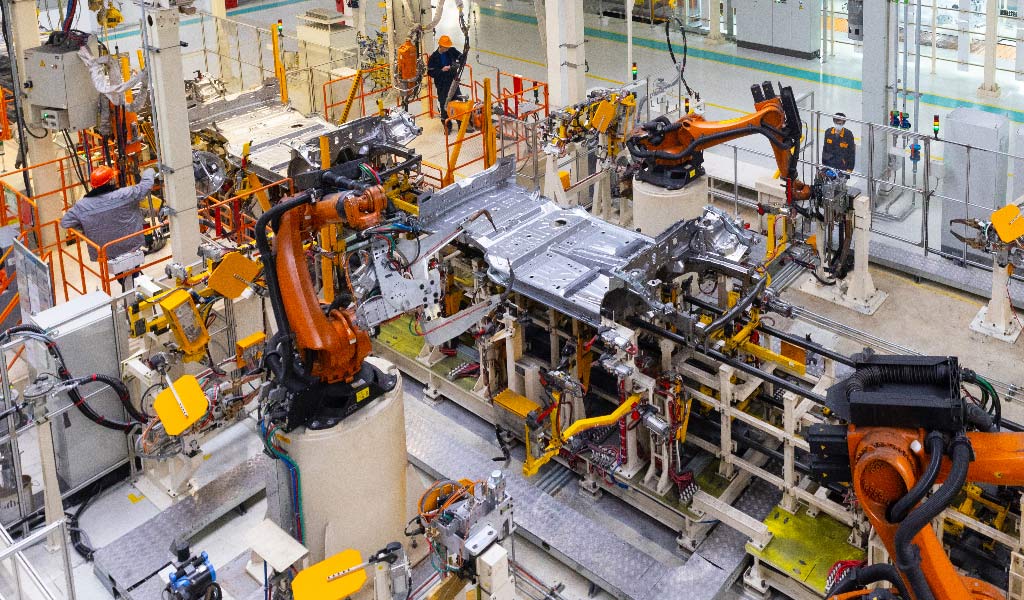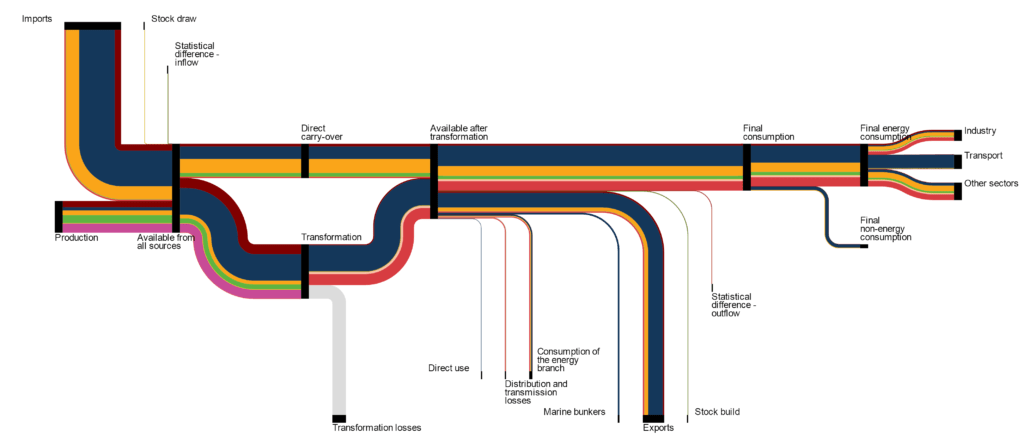Greenhouse gas emission reduction targets for industry have long existed, but international instability and skyrocketing energy prices have pushed energy efficiency to the top of the priority list.
Automation can be an important factor in reducing energy costs in companies, and in this article we explain why.

The energy problem in industry
The final energy consumption of industry in Europe is 26.1% (source: Eurostat), while in Spain it reaches 31% of our energy (source: IDAE), corresponding in large part to the manufacturing industry. These industries are large consumers of electricity and gas, so they have been greatly affected by the increase in energy costs.
In this context, the goal of becoming more energy efficient is not only a matter of reputation, marketing or corporate social responsibility. It is more a question of survival. Moreover, according to some indicators, the price of energy will continue to rise in the coming years, so companies are looking for ways to cushion this impact.
And one of the possible solutions involves automation to improve the energy efficiency of the manufacturing industry.
Final energy consumption by industry in Europe is 26.1%, while in Spain it reaches 31%.
The energy benefits of automation
It should be made clear that improving energy efficiency does not mean producing less (and thus consuming less energy), but rather improving productivity and efficiency to produce the same amount using fewer resources. This has two important implications for industry.
The first affects profitability. Energy costs are a major item in many industries. Therefore, any strategy aimed at cost reduction must include energy efficiency initiatives.
The second concerns sustainability. For some time now, we have had increasingly demanding environmental regulations. In this sense, actions aimed at energy efficiency help to reduce the levels of emissions from industrial activity.
How can automation improve energy efficiency?
When facing the challenge of improving energy efficiency, there are different complementary strategies. One of them is to improve energy efficiency from an integral perspective of industrial processes and their optimization. This is where process automation can help to improve the energy efficiency of an industrial plant thanks to better monitoring and optimization:
- Reduction of waste due to less variability in the processes and a lower volume of defective products.
- Reduced number of shutdowns (and consequent start-up) due to better preventive and predictive maintenance practices.
- Optimization of production flows taking into account energy consumption, a criterion that is not normally taken into account.
- Management of equipment usage times based on consumption and electricity prices (peak or off-peak pricing hours).
- Lower energy consumption per manufactured part by reducing lead time.
In short, greater flexibility and process autonomy makes it possible to manage a variable (energy consumption) that in rigid process scenarios or those dependent on other factors (such as operator shifts) is very difficult to manage.
Improvements in energy efficiency through productivity are closely related to technological innovation, the application of digital solutions and automation.
Better production processes mean lower energy consumption
Integral process control systems, such as our MICplatform, can be more cost-effective than replacing equipment, producing a number of other benefits in terms of quality, information management, etc.
On the contrary, if there is no good control system or the process has a high variability, no matter how efficient the equipment is, the overall energy balance (value produced in relation to the resources consumed) will not be good. Repeating a defective production is a waste of energy.
One strategy to address energy improvement is to integrate industrial processes to monitor and optimize them.
Automated processes allow you to act on causes in real time
There are still many organizations that do not have monitoring tools capable of providing real-time data on their production processes and energy consumption. And even fewer have systems that allow advanced control of processes based on this data in order to adopt appropriate strategies to reduce energy consumption.
Having a system that is responsible for collecting data on what happens in the workshop allows you to identify the main energy consumptions. This is when it becomes necessary to have automated processes in order to optimize flows and tasks in real time, taking into account the energy consumption variable.
Intelligent automation is the key to energy efficiency in industry
Achieving real efficiency in industry involves the application of automation from a global perspective. That is, improvement is not obtained by implementing independent solutions here or there, but by the proper integration and connection of all parts.
Having a central system that analyzes key information in real time allows for proper synchronization and management of resources, optimized planning and better use of all information for decision making.

Flow chart of energy consumption in Europe developed by Eurostat.
What savings can automation achieve?
The energy impact of automation depends on multiple factors and is not always easy to assess, although it is estimated that savings can range from 10 to 30% of energy costs, according to data from the International Energy Agency.
Therefore, automation and the implementation of digital solutions are something to consider, especially in periods when energy costs are skyrocketing. Implementing solutions of this type can help improve productivity, while obtaining a very short return on investment.
In SMARTPM we offer intelligent automation solutions and optimization of industrial processes in the field of precision machining. If you think we can help you, do not hesitate to get in touch with us.
Header photo: Freepik - usertrmk
